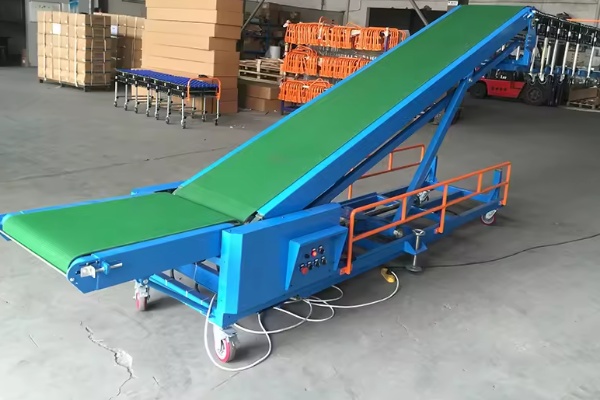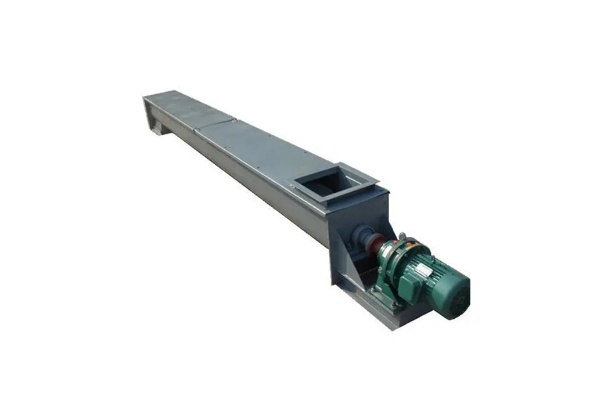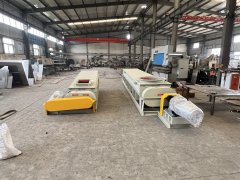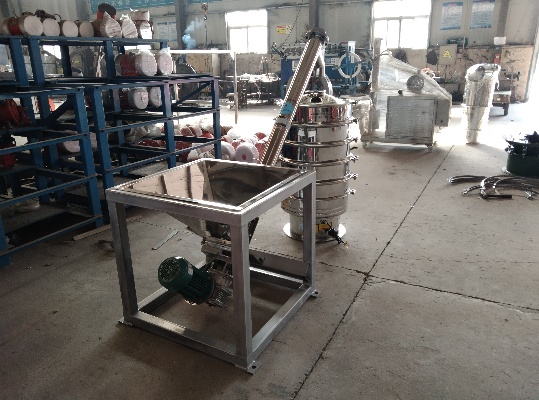Mobile Conveyor Manufacturer
Wednesday October-22 2025 11:39:54
Mobile Conveyor manufacturers can provide solutions to adapt to various working environments. Manufacturers produce a wide variety of equipment, and not all products have the same specifications or functions. Mobile Conveyors provided by different manufacturers vary in structural design, component material selection, and specific performance parameters. For example, some manufacturers may focus on the production of heavy-duty belt conveyors, while others may specialize in light-duty spiral conveyor equipment.
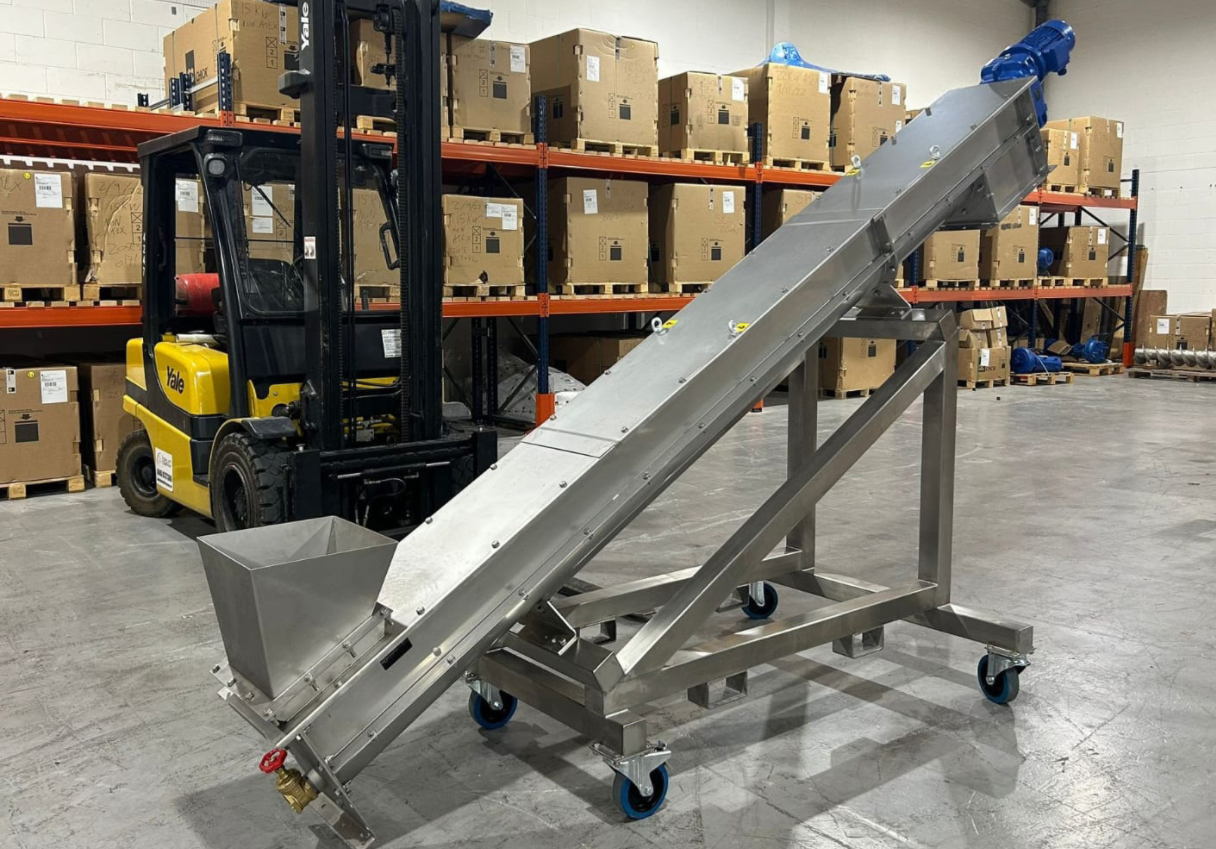
What are the types of Mobile Conveyors?
Mobile Conveyors are very popular in situations where materials need to be moved between different locations due to their flexibility and convenience. According to their conveying principles and structural characteristics, they can be mainly divided into the following two categories:
Mobile Screw Conveyor
Working Principle: The working principle of the mobile screw conveyor is that the material moves forward along the trough or pipe under the continuous push of the spiral blade until it reaches the discharge port. The whole process is carried out in a relatively closed environment, which effectively controls dust and material scattering.
Structural Features: This conveyor is mainly composed of a tubular or U-shaped trough with spiral blades, which push the material forward when the spiral blades rotate. It is usually equipped with a drive device and a movable base (such as wheels) to facilitate movement between different locations.
Applicable materials: Mainly used for conveying powdery, granular and small bulk materials, such as cement, grain, feed, sand, fertilizer, etc. It is not suitable for materials with high viscosity, easy to entangle or too large blocks.
Conveying distance and angle: Mainly used for short-distance conveying, and can work at a certain tilt angle, but the larger the angle, the lower the conveying efficiency may be.
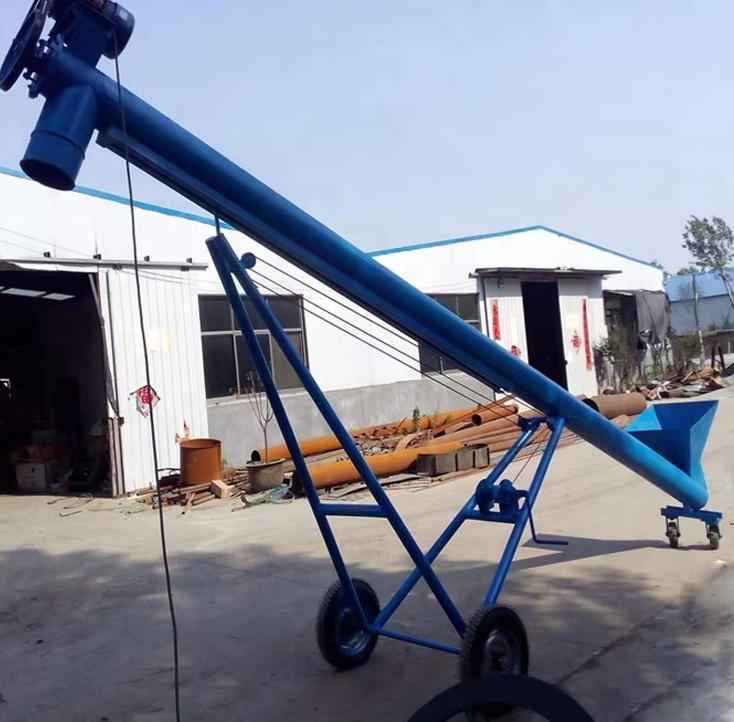
Mobile belt conveyor
Working principle: The working principle of the mobile belt conveyor relies on friction drive and continuous circulation. It consists of an endless conveyor belt (usually made of rubber, PVC and other materials). The material is placed on the running conveyor belt and is conveyed from the feed end to the discharge end as the belt moves.
Structural features: This conveyor uses a continuous conveyor belt as the main load-bearing component, and drives the conveyor belt to move by driving the roller to convey the material. It is usually equipped with an adjustable lifting mechanism and a mobile base with wheels, which can flexibly adjust the conveying height and tilt angle.
Applicable materials: The application range is very wide. It can transport various bulk materials (such as coal, ore, sand, soil), as well as bagged and boxed items.
Conveying distance and angle: It can be used for medium and long distance material transportation, and the conveying angle can be easily adjusted to adapt to different loading and unloading heights. Depending on the type of conveyor belt (such as flat belt, grooved belt, sidewall belt), it can also achieve a larger angle of transportation.
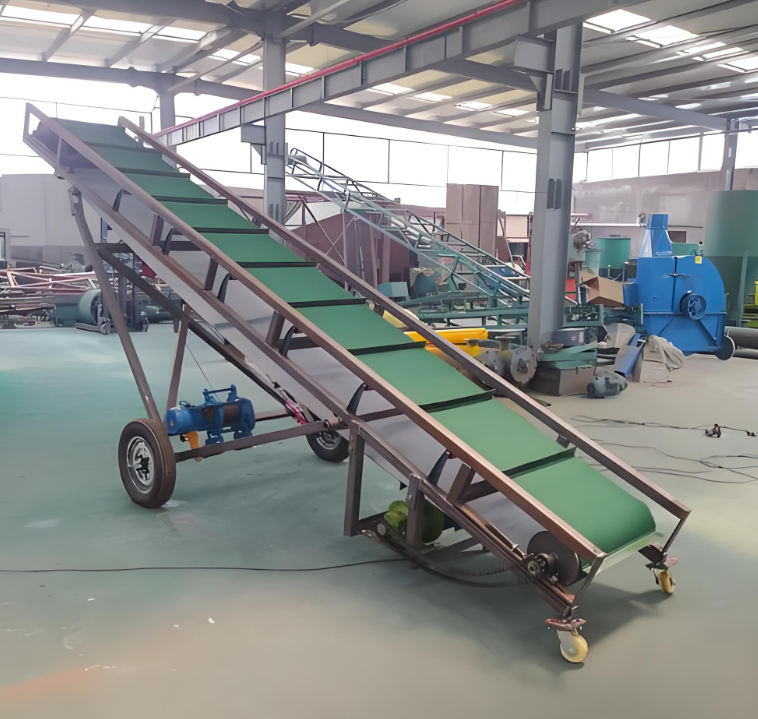
What are the advantages of Mobile Conveyor?
Mobile Conveyor stands out among many material handling equipment due to its unique design concept. Its core features are mainly reflected in the following aspects:
Flexibility and mobility: They are usually equipped with wheeled or crawler chassis, which can be easily moved and deployed between different work sites. This high mobility makes it unnecessary to have a fixed installation foundation, which greatly adapts to temporary, decentralized or frequently changing work locations.
Strong adaptability: Mobile Conveyor can adapt to a variety of material types and complex working conditions. Whether it is loose coal, ore, sand, grain, or bagged or boxed items, they can be effectively transported by choosing different types of conveyor belts (such as flat belts, grooved belts, sidewall belts) or spiral structures. At the same time, they usually have height and angle adjustment functions, which can be flexibly adjusted according to the height difference of the inlet and outlet points to achieve the lifting, lowering or horizontal transportation of materials.
Easy operation: Many models are equipped with electric or hydraulic lifting systems, and operators can easily adjust the inclination angle and height of the conveyor. Some equipment may also integrate remote control functions, which further simplifies on-site operations and reduces manual intervention.
Improve efficiency and safety: Through mechanized transportation, Mobile Conveyor significantly improves the efficiency of material handling and reduces the intensity and time of manual handling. At the same time, automated and semi-automated operations also reduce the risk of workers directly contacting materials and improve operational safety, especially when handling heavy, bulk or hazardous materials.
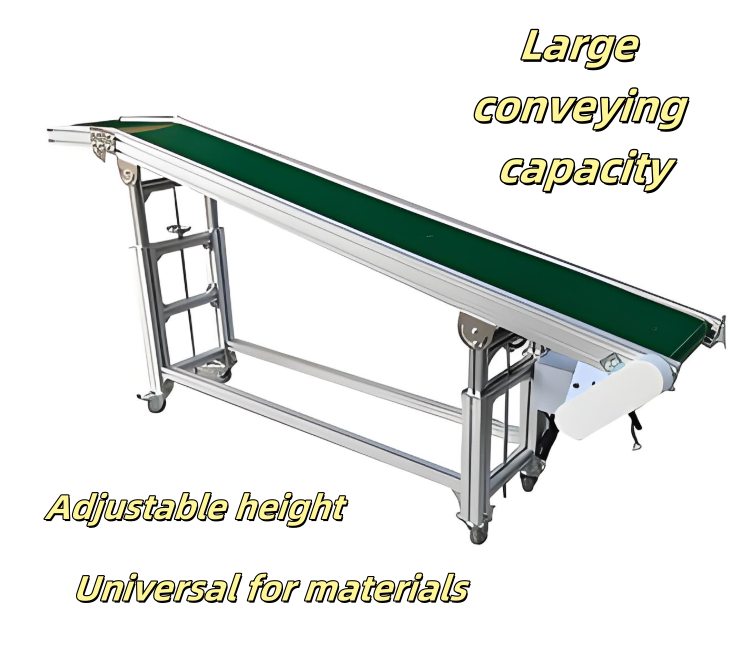
What are the applications of Mobile Conveyor?
Mobile Conveyor is widely used in many industries and scenarios due to its flexibility and adaptability, especially in situations where the working position needs to be changed frequently or temporary tasks need to be handled.
Flexible transfer of bulk materials: Mobile Conveyor can be used to quickly build material flow paths on site. Whether in an open yard, a simple silo or a temporary work area, it can transfer bulk materials (such as sand, gravel, grain or waste) from one point to another without the constraints of fixed infrastructure. This is especially useful when the unloading or loading location needs to be changed frequently.
Lifting and lowering of materials in high-difference environments: The equipment can easily cope with material transmission needs at different heights. By adjusting the elevation angle of the conveyor, materials can be lifted from the ground to vehicles, containers or higher-level processing equipment, and vice versa.
Connecting different operation links: Mobile Conveyor can be used as an independent or auxiliary unit to connect discrete links in the production process. For example, when materials need to be temporarily transferred from one processing area to another for subsequent processing, or when materials need to be transported to screening, packaging and other equipment during loading and unloading, it can provide a temporary, adjustable connecting bridge to ensure the continuity of material flow.
Optimize storage and space utilization: By assisting in the stacking or unloading of materials, Mobile Conveyor helps to make more efficient use of limited storage space. It can transport materials to higher places in the stack or help evenly distribute materials, thereby maximizing the capacity of the warehouse or yard. It can also provide convenient solutions when materials in a specific area need to be emptied or transferred.
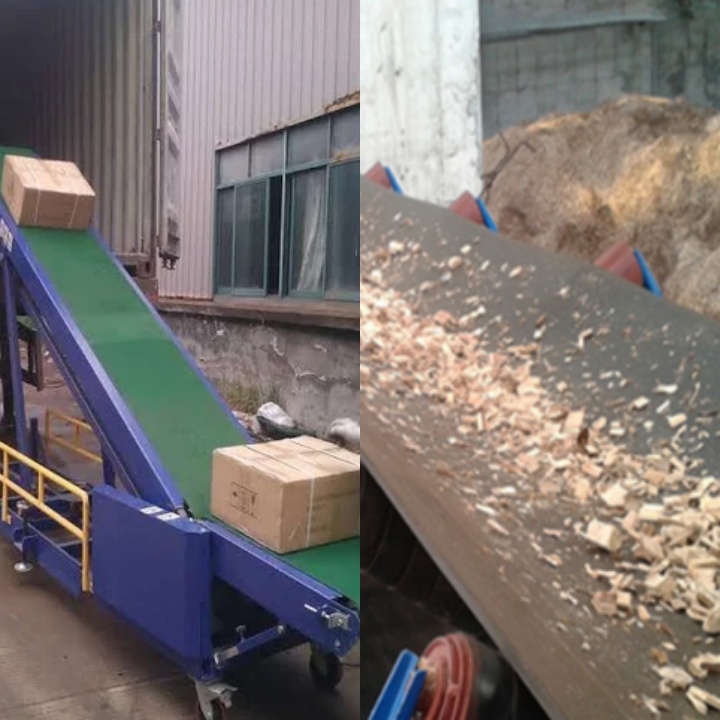
Mobile Conveyor Manufacturer
Mobile conveyor manufacturers include machrise, SKE Industries, SAUTEC, and Schnell Industries. Machrise has many years of manufacturing and R&D experience. Its equipment uses reliable high-torque diesel engines and direct hydraulic drives for excellent performance. They offer over 50 types of equipment, including mobile belt conveyors, versatile conveying systems, FAM mobile, portable belt conveyor systems, and grain conveyors, offering one-stop purchasing services.
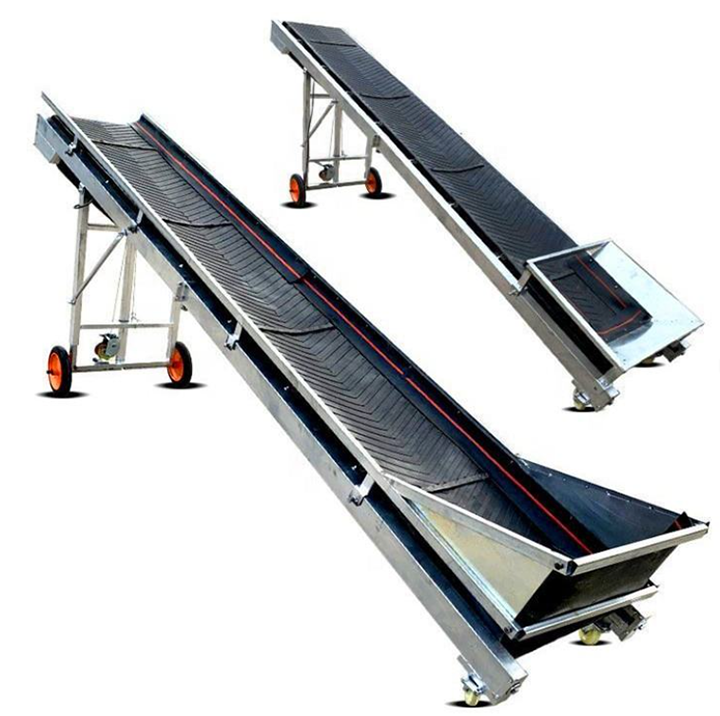
Mobile Conveyor Manufacturer not only provide standardized products, but also have the ability to customize equipment according to customer-specific needs. Based on their technical reserves and production experience, manufacturers can adjust design details, such as changing the length, width, and lifting height of the conveyor, or selecting special wear-resistant and corrosion-resistant materials to adapt to unique material properties or working environments. Therefore, manufacturers can provide more precise solutions for diverse material handling challenges.
